Skimo bindings
Weighing from less than 100 grams to nearly a kilo, the common denominator are the pins into which you stick your boots and that enable you to climb. From the revolution of the pin binding to the latest hybrids for freeriding, here are all the best bindings the skimo market has to offer.
- Author: Claudio Primavesi
- Photographer: Matteo AgreiterNicola Damonte
Let’s make one thing clear. For backcountry skiing, you need two-pin bindings.
The vast majority of the bindings on the pages that follow have descended from that revolutionary idea of Fritz Barthel. That said, a lot has changed since the original patent expired, with various interpretations being developed to overcome the limits of such a minimalist binding, especially in response to modern ski techniques marked by more sidecut and greater stresses on the skis.

This has included machining components from a single block of material and the use of lighter, stronger materials, as well as toe and heel systems that, with the exception of a few more traditional setups, have reduced both the drop between the toe pin and the heel pin (with the heel pin being raised) and the torsion that happens when the bindings are under pressure. From this base model, other alternatives have been developed, particularly for freeriding, where weight takes a bit of a backseat to performance. This has given rise to the hybrid binding (with a toe pin and a step-in heel piece), followed by the chameleon bindings developed by Salomon, Atomic and Armada that switch from a toe pin for the climb to an alpine toe piece for the descent, paired with a step-in heel piece. These are systems that have traded the minimalism of the two-pin binding for the functionality (and weight) of a high-performance alpine binding.
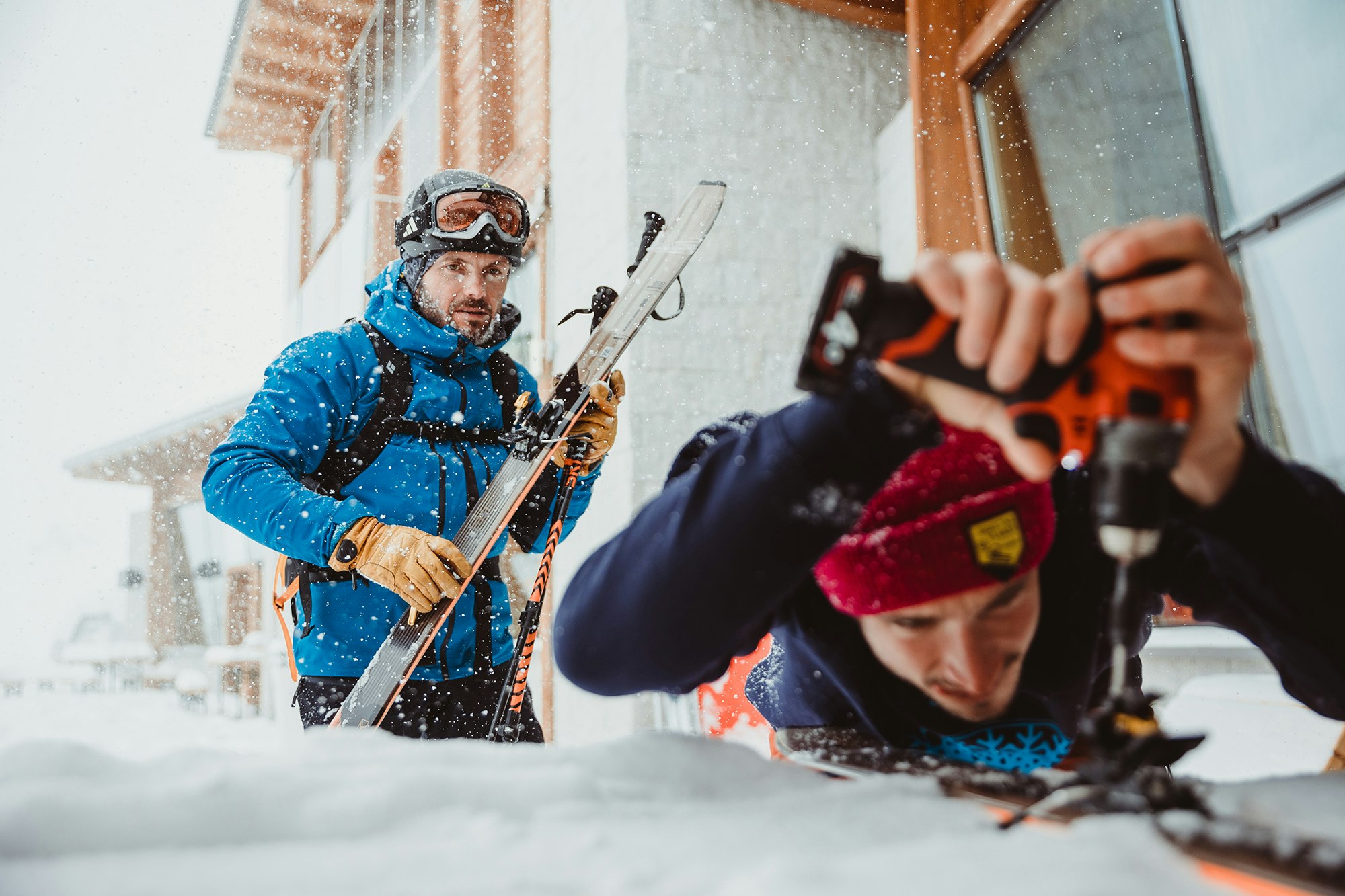
At the end of the day, what matters is the width of the ski you’ll be putting the binding on, which may tell you if you can make the jump from pin-tech to a hybrid. This will tell you the forces under which the binding will have to work when applying pressure to the ski’s edges, which can put both the ski construction and the bindings themselves under a great deal of stress. The ski’s waist width also tells you roughly the area that’s available for the drill pattern used to mount the bindings. A modern freeride binding for skis with waist width of over 100 is often bigger than the binding zone on a traditional touring ski with a waist width of 80. Conversely, a small race binding with a very small drill pattern, designed for ultra lightweight skis with just 64 millimeter waist width, would undergo forces that could rip in from the ski or twist the pins if mounted on a touring or freeride ski. There’s nothing all that new for the 2023-24 season, with the exception of hybrids and the bomb-drop of the Ski Trab TR1, a binding demanding skiers have been awaiting for years, not just for freeriding but also for steeps and other hard-core outings. In touring bindings, manufacturers have been perfecting the details to enhance the overall experience, starting with the practicality of the ski stopper. Under ISMF race rules, a ski stopper is now mandatory, so this is the most recent major development that came last year.
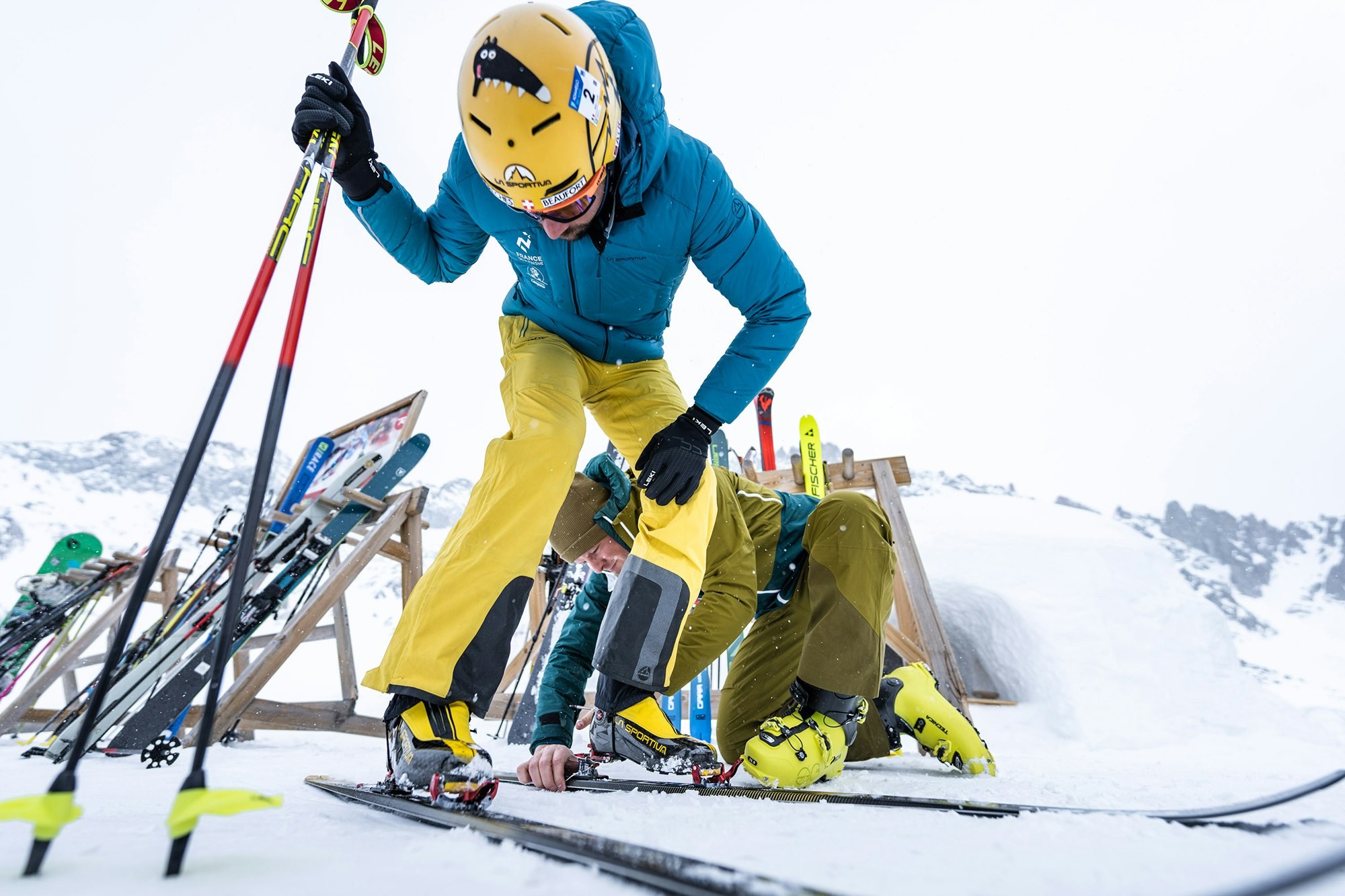
Racing: lightweight and fast
While there are a few models at record-low weights below 50 grams (but without ski stoppers or safety release mechanisms), race bindings usually start at 100 grams on up to just over 150 grams for athletic applications, if not for actual racing.
An excellent setup might be: lightweight skis in the 700-800 grams range with a waist width of 64-66 millimeters, or at most 70 or so for situations in which minimizing weight is of primary importance (such as major ascents or traverses); and race or light touring boots weighing about a kilo and with lots of range of motion (ROM) with no more friction than moving your bare ankle, especially in extension. This is because essentially just one walk mode position for the heel piece, with the flap lowered on the two heel pins, and this isn’t much higher than the zero-rise position of a touring binding with sliding plate and ski stopper, the boot needs to allow for maximum ankle flexibility to lift the ski. If you opt for a modern integrated, automatic ski stopper, this will add about 15-50 grams, depending on the brand. If you add a stopper to an existing race binding (since no race bindings had stoppers until last year), this sort of hack will weigh more and may lack the automated mechanism that locks the raised stopper in place by flipping the flap when changing modes.
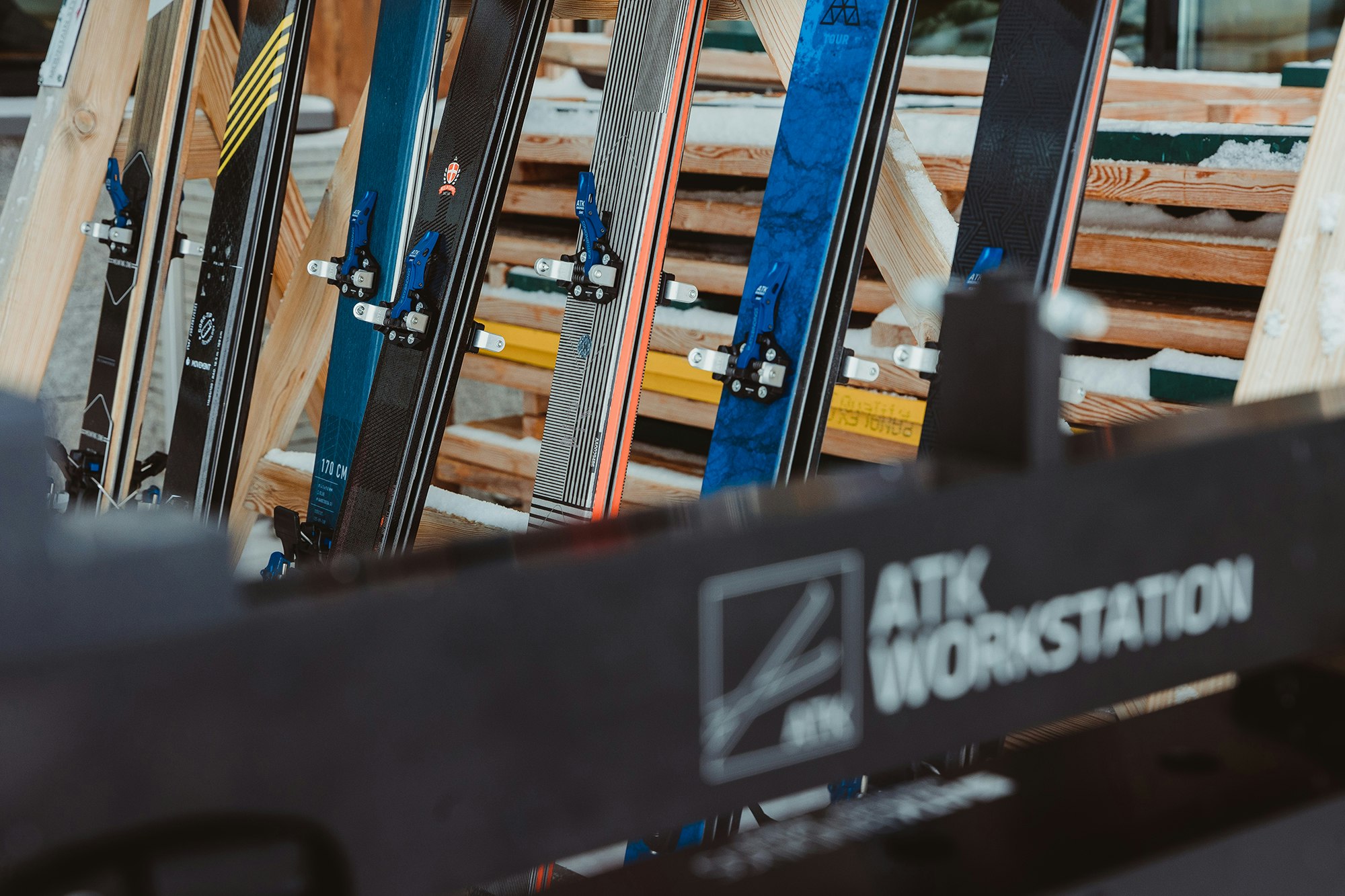
Light touring: speed and simplicity
Weight certainly does matter. But it’s not so much the light weight you look for in a binding for light touring as the style and simplicity of the mechanism, which allows you to explore the mountains freely, without all those unwanted interruptions of having to adjust skins, skis, bindings and boots.
Plus, the basic functions of walking and skiing need to be top notch to provide the performance you want from your lightweight gear. So, no third or fourth climbing positions, especially not if they’re done by rotating the heel piece. If you have heel flaps with raisers, a couple of climbing positions will do, but ideally you’ll have just a single race-style binding with a light touring boot, all of which give you excellent ROM. Just set it when you change modes and you won’t have to touch it again, whatever terrain you come across. Generally speaking, binding for light touring offer a drill pattern suitable for all lightweight skis, from the nearly extinct 76 waist widths on up to about 90. Needless to say, though, if you have a ski at either end of these two extremes, take extra care to ensure that the drill pattern works for you. On a 90-millimeter ski that weighs just over a kilo, it’s best to ensure the general reliability and performance of the system as a whole and pick a binding with a wider drill pattern.
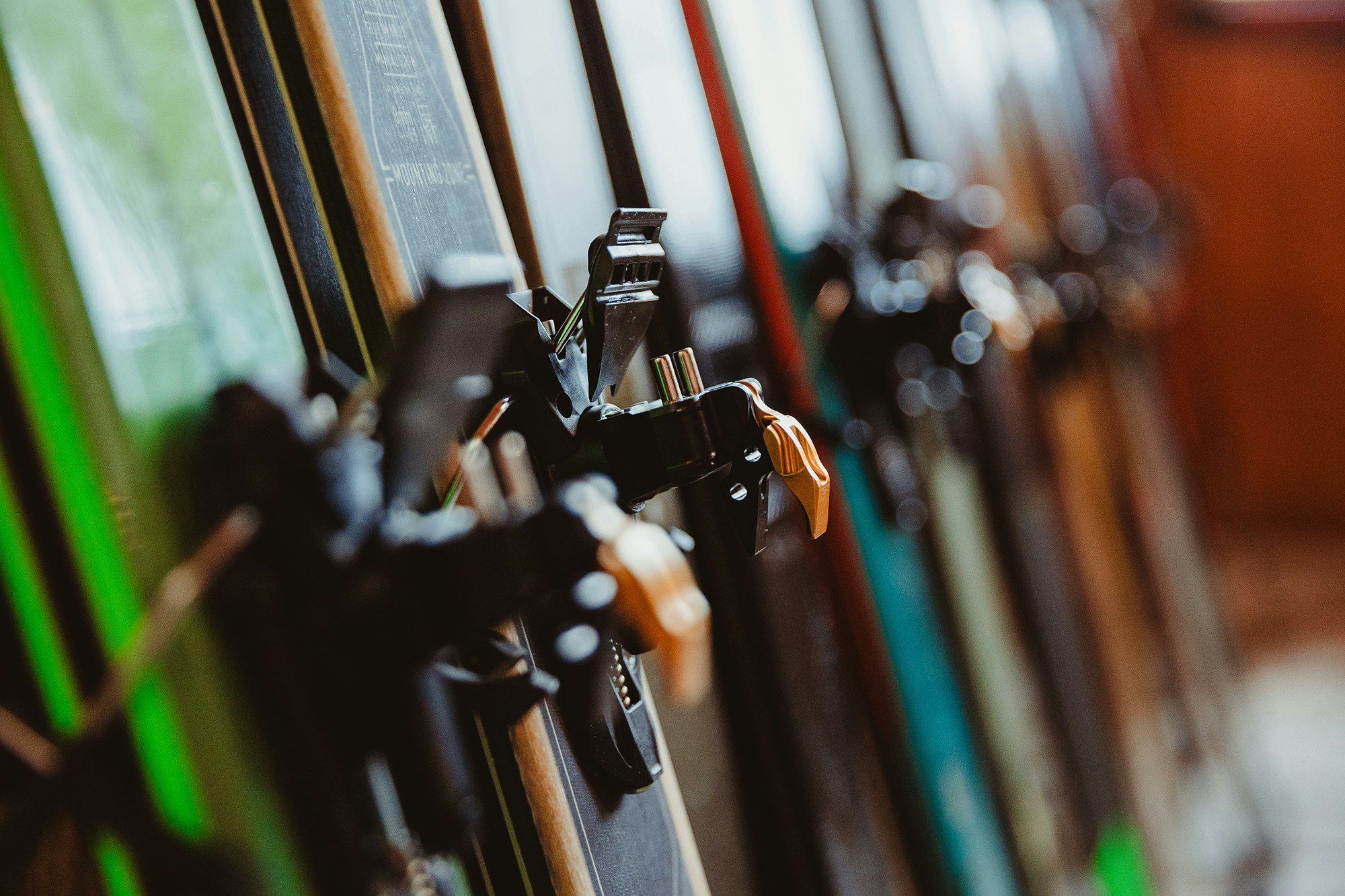
Ski touring: comfort and performance
The classic touring binding needs to as complete as it is minimalist. In terms of options, first and foremost there’s more heel lift, because virtual no touring boot offers the same ROM as a boot for light touring. Your only option is to use the climbing position best suited to the slope and to your personal preferences. Even the zero-rise, i.e. flat, setting can be perfectly comfortable in a range of fairly common situations, such as long false flats and brief descents with the skins on.
Nowadays, nearly all of these full-featured touring bindings have drill patterns suited to touring skis with waist widths of up to around 90, and don’t underestimate the importance of this if you have skis near the upper limits of this segment. All touring bindings enable you to adjust the vertical and lateral release values at the heel, but very few at the toe (new for 22-23, ATK has now released their Evo toe piece for some of their Raider bindings). Remember, though, that the stated values are those of the manufacturer, so not explicitly those of the DIN ISO 13992 standard for safety bindings. Without DIN-TÜV certification, which only the Dynafit ST Rotation 10 bindings (and not their 14 siblings) have, the term “safety binding” can’t be used, and “DIN” should not be stated in conjunction with the release values. So read the user’s manual carefully, and don’t equate the value with those typically stated for alpine bindings. Paired with high-quality touring skis and boots of good size, which can weigh up to 1500 grams, fast, powerful skiers might realistically look for bindings with release values above an alpine 10. You’ll almost never want to lock into a 12 (which might give more confidence on a steep, exposed slope, but remember to loosen it a turn at the bottom), but rather set the heel at around 9-10 in order to stay in the comfort zone where the conditions are best for the spring-release mechanism. On this topic, don’t underestimate the value of a cushioned end-of-travel on the adjustment screw, which generally involves about 10-15 millimeters of spring and can be found on several models of touring bindings to provide gradual resistance against the shortening of the ski as it bends to avoid mechanical failure.
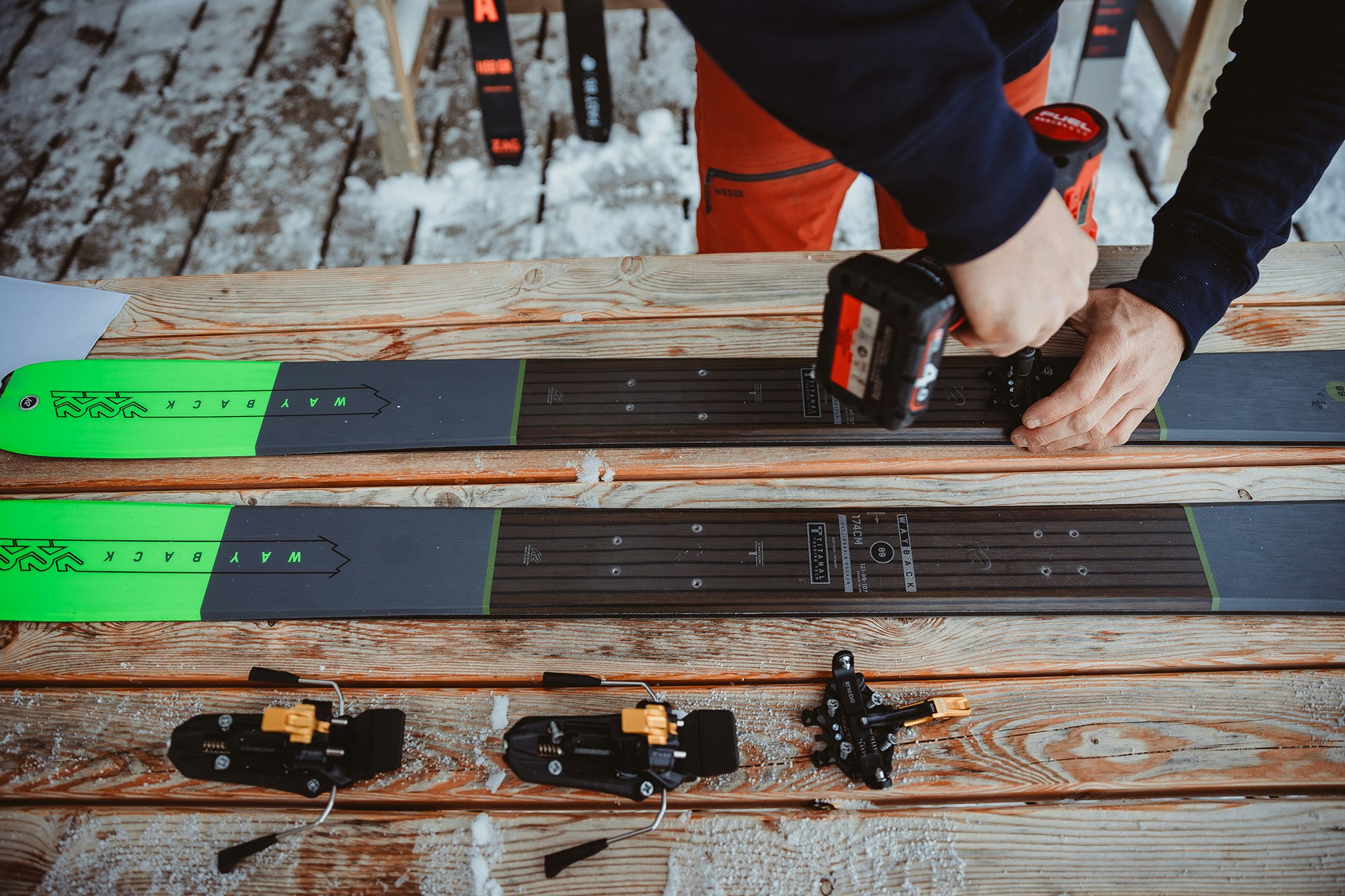
Freeride: pure performance
What really makes the difference as downforces increase is the physical contact under the pressure of the springs between the bottom of the boot and the ski, with the base of the binding in between. This is why freeride bindings now have spacers for the base of the binding below the boot to enhance the performance of stronger pin-tech and hybrid bindings, which change the rules of the game by blocking the boot across the entire surface of the heel piece, from top to bottom, like an alpine binding.
If you then also have an alpine setting for the toe piece for the descent, as in Shift bindings or the Marker Duke PT, that’s all you need. Plus, being able to go from walk to ski mode without having to open the toe piece is great for situations in which, for example, you want to scale up a difficult climb or on short descents with skins on your skis. All at the expense of quite a bit of added weight (which you’ll feel, even if the climbs are shorter). This is why the major announcement in skimo bindings is the new hybrid Ski Trab TR1, which now (unlike its TR2 predecessor) no longer requires you to alter your boots to get the heel piece to fit properly. It also gives you superior performance while weighing less than (or the same as) some of its competitors, but with stronger materials in a smaller package. Skiing with the heel, rather than having to rely on the toe, so that you’re less subject to twisting the pin system, could even be an option on skis that are less stiff, by offsetting the increased weight with a responsive light touring boot (and with a more balanced, new-school technique). Sound crazy? Maybe not so much. Either way, the pin-tech binding is alive and well in freeriding, too. Although the physical contact under alpine-like pressure is hard to match (and how many of us really ski hard enough to actually test it?), for skiing the pins have the benefit of precision and torsional force in the toe. Certain manufacturers, such as ATK, even state release values of up to 15, which are perfect when paired with the Cam Release System in the heel, which is currently the world’s only pin-tech binding with a leg up in resistance to torsional forces and lateral slippage. And Evo toe pieces with adjustable release values don’t just enhance safety when releasing during a fall, but also help to balance load distribution and the elasticity of the bond between the various components of the binding.
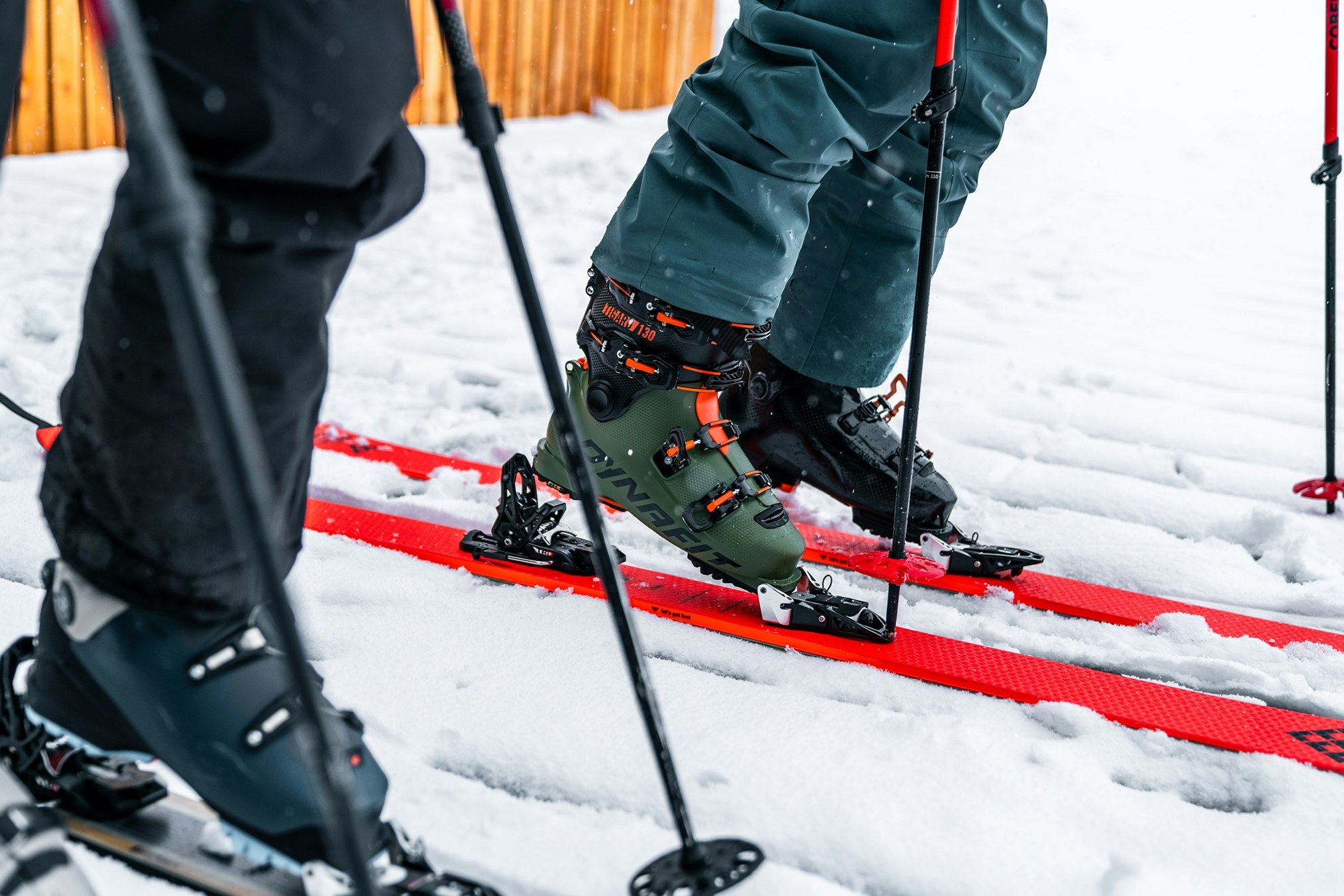
Share this article

